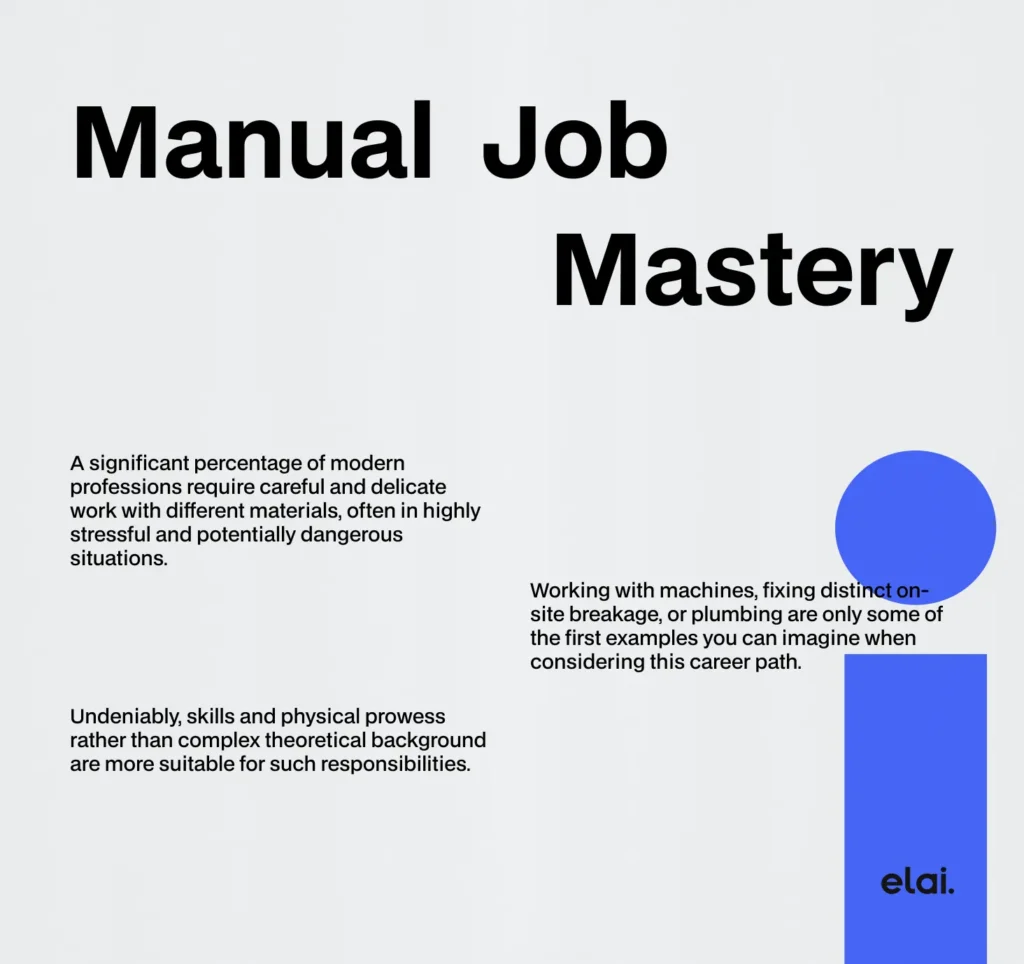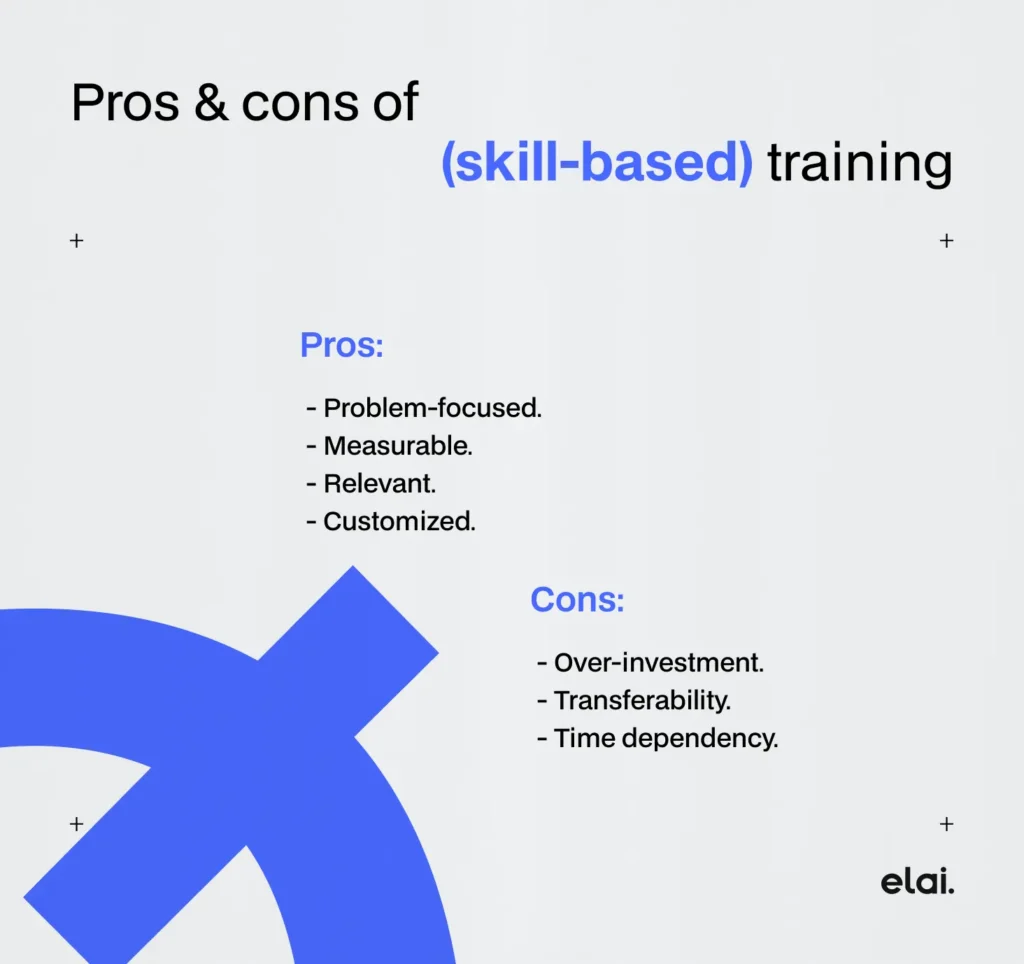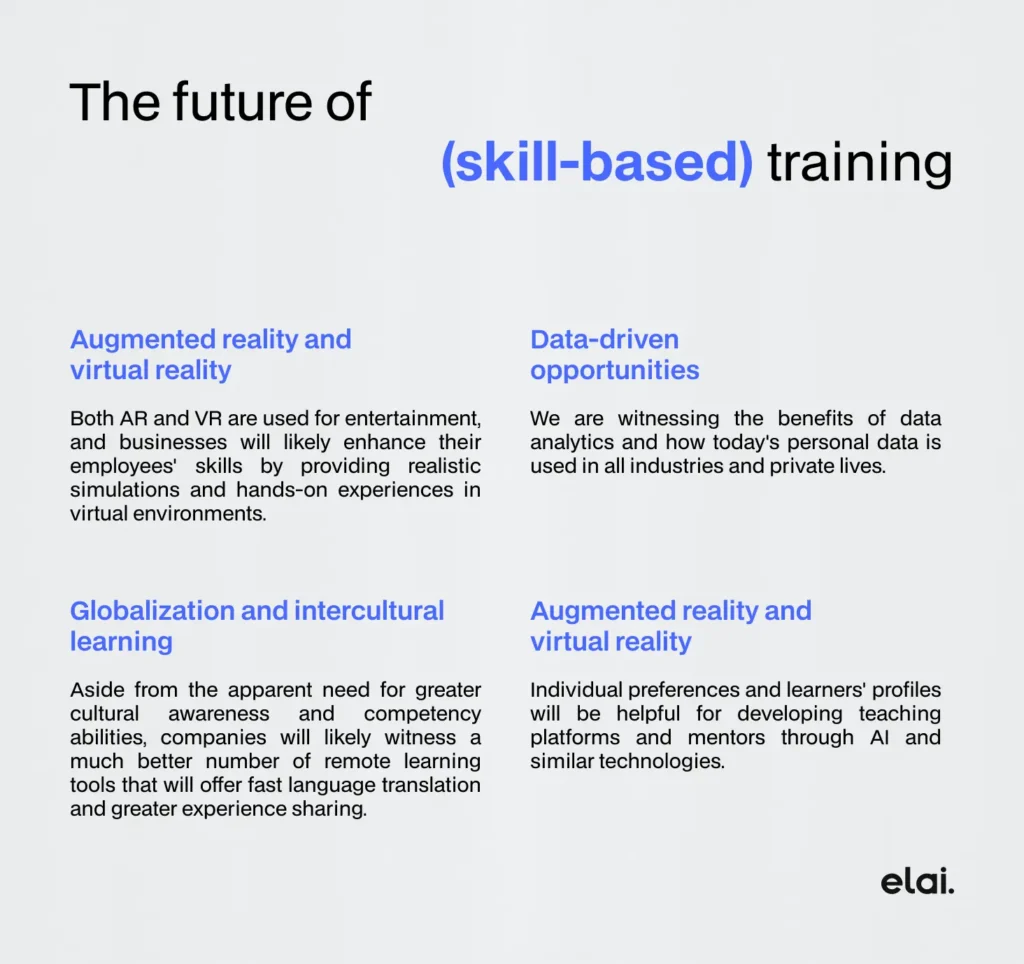Businesses utilize learning based on what they need, especially because the workplace calls for faster, more flexible, and more practical strategies. While surprisingly easy, skill based training is a relatively overlooked approach that aims to reduce unnecessary learning stages and achieve measurable outcomes in the shortest time frame possible. By leveraging the potential of this learning method, companies can pave their way to a more resourceful and satisfied team.
What is skills-based training: The basics
Although the idea of skill based training definition may vary, it is predominantly seen as a learning strategy that targets specific functional capabilities necessary for career advancement and performing on-the-job responsibilities. Simply put, it’s a training type that an organization designs to align the workers’ scope of skills with the requirements of their positions. Over the course of one’s professional journey, individuals consistently update their knowledge and practical aptitudes to stay competitive. For instance, new office hires might undergo a brief workshop on using company software. Most often, this worker won’t listen to a historical lecture on why this software was made but will get the gist of operating it.
Similarly, this approach can be chosen as a more useful alternative to knowledge-based learning, even on an autonomous basis. Those who need to acquire capabilities to apply for a new job or master a new hobby will also choose skills based training. Nonetheless, when speaking of this education perspective, most people view it as inherent to an organization’s staff development that equips its teams with the soft and hard skills required for delivering the expected objectives.
Applying skill-based training
The versatility of a more practical learning method is impressive in today’s environment. Let’s examine some skill based training examples.
- Technological proficiency. Due to the rapid advancement of technology, including IT, engineering, and cybersecurity, the demand for workers who remain at the forefront of tech progress is increasing daily. To meet such demands, companies hire or train their specialists to enhance corporate understanding of market-specified fields, such as data analysis, word processing, or risk assessment.

- Communication competence. Due to the globalized expansion that most large corporations aim for, the ability to interact has become a personal advantage that is indispensable for an efficient workplace and cannot be learned through theory. Managers and leaders prioritize investing in employees with strong communication talents, including empathy, negotiation, and interpersonal skills. Since these characteristics are only learned via practice and introspection, they are heavily task-centered.

- Project management expertise. If you want to start a business or make a persuasive case to your sponsors, using only knowledge is insufficient at best and catastrophic at worst. Such tasks as budgeting, stakeholder interaction, and strategy formulation are the abilities a person may accumulate with experience and guidance.

- Manual job mastery. A significant percentage of modern professions require careful and delicate work with different materials, often in highly stressful and potentially dangerous situations. Working with machines, fixing distinct on-site breakage, or plumbing are only some of the first examples you can imagine when considering this career path. Undeniably, skills and physical prowess rather than complex theoretical background are more suitable for such responsibilities.

Pros & cons of skill-based training
Although the benefits of a skill based method cannot be ignored, it may present several obstacles during implementation or adaptation.
Pros:
- Problem-focused. Mastering a distinct capability allows an individual to explore and work on a toolset that can be utilized for solving a problem.
- Measurable. The results from skill based training can be assessed easily, and most workplaces can observe how a particular responsibility is accomplished to evaluate the person’s abilities.
- Relevant. Employees who acquire new proficiencies typically target the abilities that are associated with their job tasks, which is attractive resource-wise.
- Customized. If properly introduced into the office, skill based training courses can be used across all organizational levels and align with the managers’ objectives. Investing in such a model can offer substantial long-term advantages compared to outside learning opportunities.
Cons:
- Over-investment. While this educational method is profitable in the long-term perspective, the short-term outcomes will cause noticeable resource expenditures if the program requires considerable changes and a systemized approach.
- Transferability. The skills and implementation of training can be heavily situation-based. As a result, the lack of theoretical background fostering greater flexibility can make the gained strengths challenging to fit into other contexts or positions within the company.
- Time dependency. In today’s rapidly changing workplace, practical skills can quickly become outdated. Specifically, the ability to type quickly, once highly valued, is no longer considered a noteworthy achievement.

Implementing skill-based training in your organization
Developing your own educational schedule involves several stages: preparation, enactment, and assessment.
Stage 1. Preparation
A manager should first assess the gaps that would create a need for learning before making any further steps. Deciding on this will require consultation with other departments, if necessary, to provide a comprehensive overview of the current issue. Furthermore, an individual or team responsible for the design of the program should consider the available resources, including budget, potential mentors, available tools, and timeframe. After these stages, establishing specific learning objectives with potentially desired results (for example, being able to answer a certain number of calls or working through particular data without help) will serve as a crucial starting point for preparing the plan. The milestones and schedule should be realistic and, if possible, discussed with all parties to ensure that the desired knowledge can be achieved realistically. Then, consider the strategy of delivery: many companies prefer skill based training online because the COVID-19 quarantine has transformed how we see education and work. Plus, it’s more accessible for the workers and enables them to learn flexibly.
Stage 2. Enactment
The implementation stage begins with assigning experienced teachers and ensuring that the learning process can be managed appropriately with the existing number of students. Then, managers launch a program and communicate their expectations and needs clearly while offering continuous support and guidance during the process of learning. They provide clear instructions on how employees can access training materials, participate in sessions, and track their progress. Even the most well-researched plans may fail if mentors do not adapt to emerging challenges. Consequently, gathering feedback and monitoring the process through regular assessment tools can ensure better project agility and more satisfactory outcomes.
Stage 3. Assessment
Once the first attempt is completed, managers should conduct an evaluation of the results and employee skill growth. While focusing on training achievements is paramount, it’s also essential to gather workers’ perceptions on the delivery methods, communication abilities of the speakers and mentors, and their general awareness of growth. Trainers should anticipate that some outcomes may not align with expectations, which can be measured against predefined metrics and proficiency levels. Labeling a program a failure is not a viable option, though; its undertaking and testing in real-life settings is already a success, but it requires additional adjustment. After you receive feedback from all stakeholders, iterate and improve the training initiative to address any identified weaknesses or areas for enhancement.

The future of skill-based training
The current perspective and the already-advancing trends allow us to glimpse the future and notice what impressive tech progress can bring to a skill based approach worldwide.
- Augmented reality and virtual reality. Both AR and VR are used for entertainment, and businesses will likely enhance their employees’ skills by providing realistic simulations and hands-on experiences in virtual environments. Their usage will also grow drastically as the prices of such options decrease.
- Data-driven opportunities. We are witnessing the benefits of data analytics and how today’s personal data is used in all industries and private lives. We can expect the same patterns to be realized in more profound insights into learner improvement, preferences, and performance.
- Globalization and intercultural learning. Aside from the apparent need for greater cultural awareness and competency abilities, companies will likely witness a much better number of remote learning tools that will offer fast language translation and greater experience sharing.
- Personalization and adaptive learning. Individual preferences and learners’ profiles will be helpful for developing teaching platforms and mentors through AI and similar technologies. It will promote a much more personal and student-oriented learning model, causing better effectiveness in terms of data presentation method, structuring, and pace.

Conclusion
Managers who want to see their businesses thrive with a dedicated pool of workers should consider introducing skill-based training in the workplace. Aside from obvious financial and structural benefits, it strengthens the connection between the employee and employer, offering more tools to adjust to growing adaptability. This way, leaders demonstrate more than just the knowledge of their business; they also express their orientation toward their team and its well-being.
FAQ
What is a skill-based training?
Skill based method is a type of training that focuses on teaching a person specific competencies necessary for completing work-related tasks.
What is an example of a skill-based method?
Training the newbies in a sales department on how to utilize different sales techniques using simulations, examples, and real-life cases is an example of this approach.
Why is skill based approach important?
It delivers fast, practical outcomes, is easier to measure than purely theoretical knowledge, and can adapt to the company’s demands.
What do skill based training outcomes include?
Although such learning effects vary from case to case, typical results include an increased proficiency in the desired skillset, better workplace accomplishment, and individual alignment with business targets.

